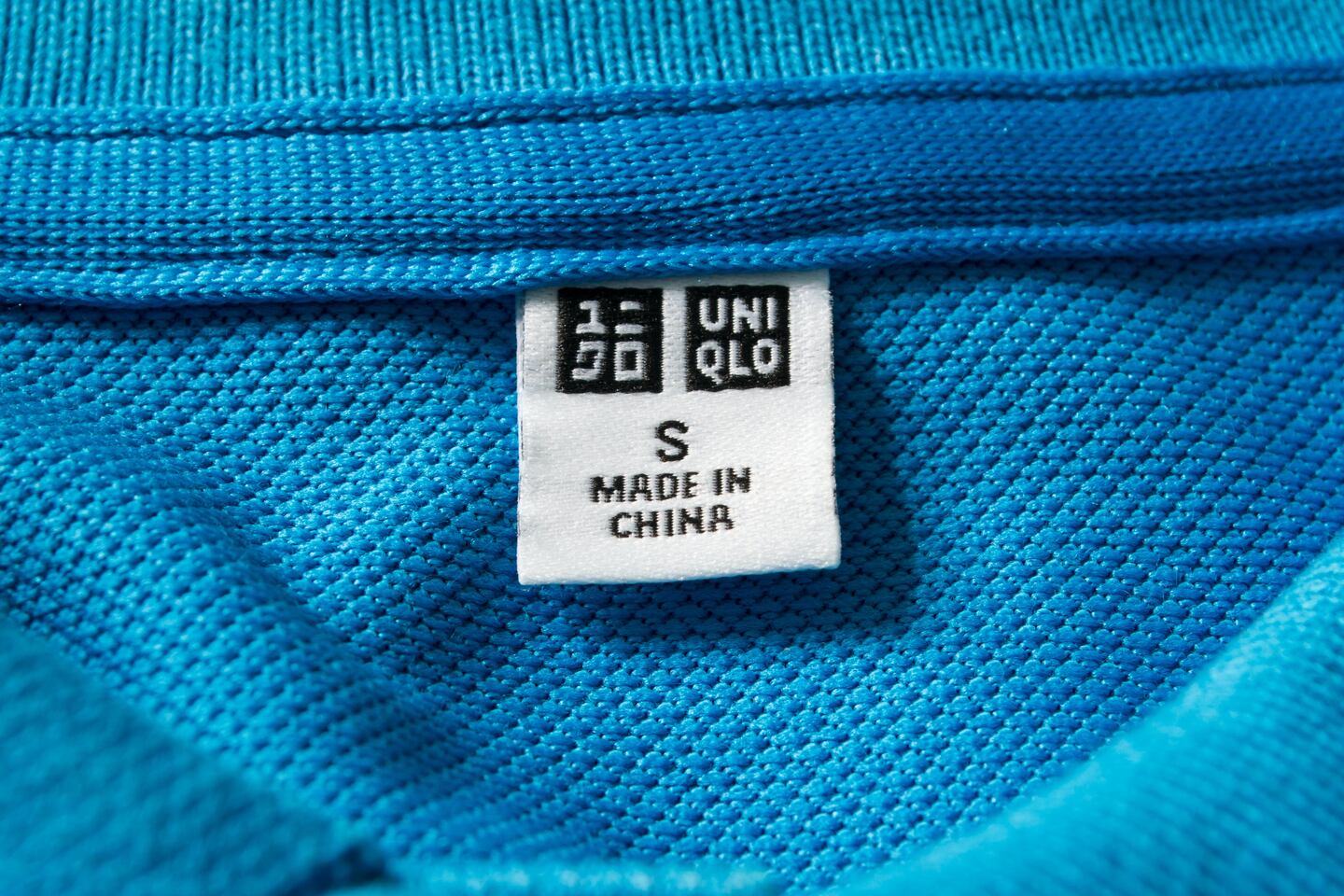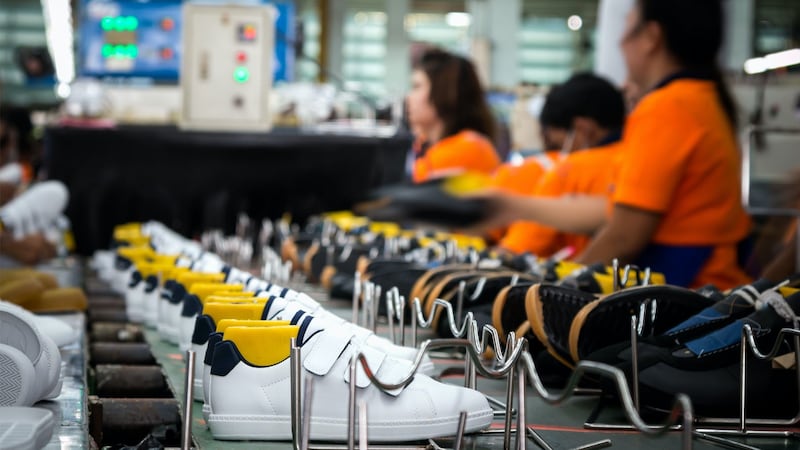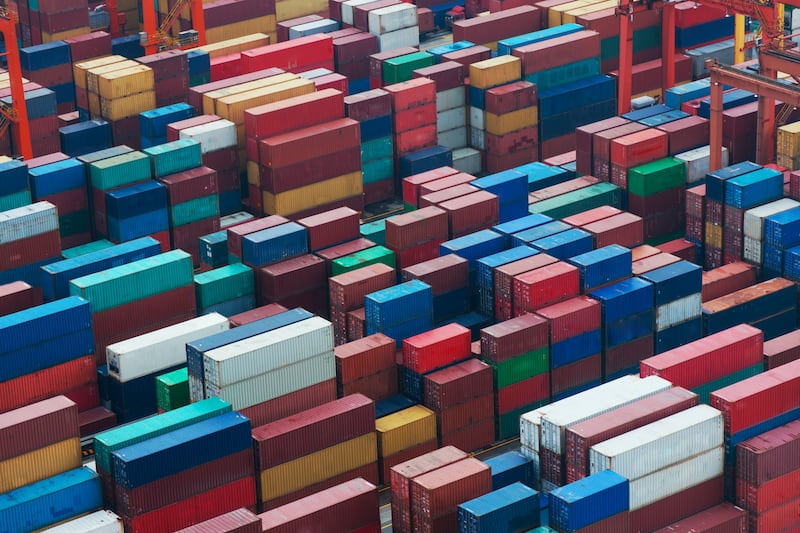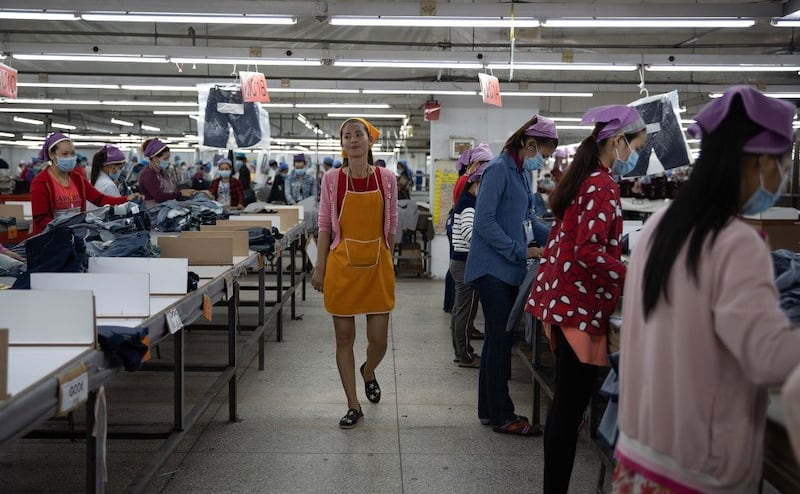
The Business of Fashion
Agenda-setting intelligence, analysis and advice for the global fashion community.

Agenda-setting intelligence, analysis and advice for the global fashion community.

LONDON, United Kingdom – The manufacturing world is facing the unenviable task of trying to keep up with modern politics. Brands whose bottom line relies on continuous, reliable, uninterrupted trade await the outcome of Donald Trump's meeting with Xi Jinping in Osaka today — and his threat to impose tariffs on $300 billion of Chinese-made goods.
“There is a real sense of panic,” says Sean Coxall, the president of solutions at Hong Kong-based supply chain manager, Li & Fung. And little wonder. Fashion is one of the most exposed sectors in the ongoing trade war between the US and China.
“We have been working with key customers on a back-up plan since Trump came into office and any company that didn’t do this in advance is pretty stupid in my opinion. Trump has done most of what he said he would, so why wouldn’t he follow through here?”

A sneaker factory | Source: Shutterstock
ADVERTISEMENT
The threat of tariffs has been almost as effective as actual tariffs: brands including Crocs, Ralph Lauren, Uniqlo, Levi's, Calvin Klein and Tommy Hilfiger have already moved their manufacturing base out of China. Yes, politics is not the only factor – rising Chinese labour costs and local manufacturers' increasing reluctance to produce low-cost goods prompted the sourcing caravan to move on long before the current trade war. But there is no doubt that Trump has hastened their departure.
“Plastic shoes we sell in Walmart and make in China already have a 67 percent tariff on them,” says Matt Priest, the president of the Footwear Distributors and Retailers of America. “Hike that up to 93 percent and the shoe isn’t worth moving or making. We sold 1.5 million of them in the US last year, so the choice is as stark as: move manufacturing now or stop producing them.”
Where fleeing brands land is dependent on a number of factors: product category, material, labour costs and skill, workers’ rights, access to ports, manufacturing equipment, tariff structures, distance to end market and — in particular — production capacity.
“Our members who haven’t moved are doing so now, and fast, but they are struggling,” says Priest. “I want to stress that this is not easy, particularly for footwear — it’s one thing for T-shirts, where you can go wherever is cheapest, but making shoes is very intricate.”
Trump has done most of what he said he would, so why wouldn't he follow through here?
While countries like Myanmar and Ethiopia continue to attract fashion players to their shores due to very low labour cost, the infrastructure simply isn’t yet sophisticated enough to compete with larger rivals. Global clothing exports reached $36.9 billion for Bangladesh and $30.3 billion for Vietnam in 2018, according to data from Trade Map and Fitch Solutions, ahead of other clothing manufacturers in the APAC region like India, where global clothing exports hit $15.7 billion in the same year.
Existing relationships are therefore important: Nike and Adidas have been relying on Vietnam to produce trainers for the best part of a decade; Uniqlo moved most of its apparel sourcing to Bangladesh before the trade war began; while Gap and H&M have been growing their base in Cambodia. This explains why some manufacturers in China seem largely unconcerned about the threat of hefty tariffs.

Cargo freight containers at Hong Kong's sea port | Source: Shutterstock
“All the big guys already shifted to Southeast Asia,” says Gerhard Flatz, managing director at KTC, which has manufactured sportswear in China’s Heishan city in Guangdong province since 1981. But these days, factories in Laos cost Flatz a third as much to run as those left in China. A dozen other factories have come and gone from Heishan over that period, he says, with the last of them closing down about two years ago.
ADVERTISEMENT
In recent years, Chinese manufacturers have become leaner, more technologically advanced and innovative. Many have moved up the value chain with a more specialised strategy and offering. Investing in high-tech upgrades rather than economies of scale, a new generation has shifted to producing fewer units but at higher profit margins.
“What remains in China, they can’t produce anywhere else,” Flatz says. That means the cost of the tariffs will likely be passed on to brands and US consumers. “It’s basically a tax and not a duty,” he says.
Indeed, the US is highly dependent on the Chinese market for clothing and footwear. According to a recent report by Fitch Solutions, almost 40 percent of its imports come from China. US imports of China-made clothing and footwear grew by 1 percent year-over-year in 2018, reaching $44.1 billion. For footwear specifically, the total import from China is significantly higher at 53 percent.
Sabrina Finlay is the chief executive of Otabo, which has helped dozens of US fashion brands make their products in over 50 Chinese factories. She says while moving production to countries like Cambodia, Indonesia and Vietnam has been happening for years, those countries still specialise in very specific types of production.
If you start cutting off American brands from [manufacturing in] China, there isn't another place they can do this
“Because the infrastructure in those countries isn’t developed the way China is, those industries aren’t as adaptable or flexible,” says Finlay. “If you start cutting off American brands from [manufacturing in] China, there isn’t another place they can do this,” she says, and the ramifications will be broad and long lasting.
The impact of President Trump’s protectionist stance is making a challenging environment even more so for fashion brands. In response to environmental degradation and high-profile human tragedies, sustainability and ethical considerations have moved up the agenda, making the sourcing equation increasingly complex. Compliance is arguably a greater consideration than ever when choosing suppliers in far-flung sourcing countries.
Whatever the coming months bring in terms of trade policy, diversification is the way to implement some degree of contingency planning. While there are many offshore options for fashion players to consider, a few sourcing hot spots are emerging as firm favourites. Nearshoring — and perhaps even reshoring — also continue to play a part in the manufacturing mix in an era where many become overdependent on China.
Vietnam
ADVERTISEMENT
In a study conducted by Natixis SA that evaluated seven Asian economies on factors including wages, World Bank ratings and logistics, Vietnam was rated the most likely country to replace China for apparel manufacturers. Workers are skilled and while wages are higher than in neighbouring countries (at $216 a month), they are less than half of China’s. Thanks to government subsidies, electricity is cheap at 7 cents per kilowatt hour. Vietnam also has free trade with end-market countries including those within the EU, Australia, Canada, Japan, Mexico, New Zealand and Singapore.
“Yes, the trade deals make it attractive, but Vietnam really is excellent at producing high value goods,” says Nainika Singh, the Asia analyst at Fitch Solutions. “For a long time, China dominated the difficult-to-make apparel goods market, but Vietnam can now produce apparel goods to the same standard. It also has a land border with China, which speeds up production time when raw materials need to be imported.”
In the footwear market, Vietnam’s advantage is unparalleled: it produces more footwear than any other Southeast Asian market. Even firms such as Uniqlo, which are focusing on Bangladesh, are moving some footwear production to Vietnam.

Machinery in a textile factory on the outskirts of Bangladesh | Source: AP Photo/A.M. Ahad
“Vietnam is great, yes,” says Priest. “And it’s certainly my number one choice in Asia. But it’s important to remember that they have 90 million people and China has 1.3 billion, so only a small fraction of the workforce is available. You simply can’t push everything out of China and into Vietnam. As a country, Vietnam is already quite full.”
Bangladesh
Bangladesh may have raised its minimum wage last year, but at just $95 a month, it remains one of the most affordable countries in Asia to produce clothes. But cheap labour is far from its only attribute: Bangladesh has also made considerable improvements in the quality of its output by importing expensive machinery and improved training for some of its workforce.
“In the more difficult categories, we’ve been on a journey to help our partners find alternatives to China,” says Coxall. “Now we’re noticing a huge [number] of brands are migrating to Bangladesh. It’s the one place you could do everything: denim, sweaters, shoes, you name it. They have even developed the laser technology you need to create high quality jeans.”
Exporting out of Bangladesh does require a longer lead time than Vietnam, particularly if you are shipping to the US. And getting materials from China to Bangladesh is a slow process, although the country is working on developing local raw materials.
On the question of workers’ rights, representatives for Li & Fung insist that a lot of effort has been made to improve this area in the last five years.
“The thing is, a lot of brands are scared off by this, no matter what the reality is. The Rana Plaza tragedy [when a garment factory collapsed in Dhaka in 2013, killing 1,134 people] was too recent for people to just forget,” says Priest. “Bangladesh is growing rapidly but it’s also hard to navigate if you don’t have a team on the ground. The infrastructure is improving, but it still needs work.”
Cambodia
Cambodia’s apparel industry employs more people than any other and represents 80 percent of national export earnings, so it is no surprise that the government has put sourcing-friendly policies in place. These include allowing 100 percent foreign equity ownership and an exemption from import duty on machinery and equipment.
“Cambodia is growing the most rapidly of all the Southeast Asian countries, and it shares ports with Vietnam, which makes transport a lot easier, as Vietnam has much better infrastructure. It also means it’s easy to get raw materials from China,” says Priest. “From what I have heard, they treat workers well and respect their rights.”

One of H&M's supplier's factories in Cambodia | Source: HM
This, however, is certainly not a view shared by everyone. Nevertheless, Cambodia’s workforce is less skilled than that of neighbouring Vietnam — and paid slightly less at $182 a month — and it has also improved rapidly in the last few years.
“Increasingly, woven shirts, T-shirts and polo shirts have been migrating from China to Vietnam to Cambodia, as skills grow and space opens up,” says Coxall. “Vietnam is already quite full but new capacity is opening in Cambodia. And while it remains riskier than Vietnam because it’s a new [sourcing] country, potential delivery risks go down if you have a third party helping out on the ground.”
Cambodia currently benefits from the EU’s Everything but Arms scheme, which allows developing countries duty-free access to the EU market for export goods. However, last October, Brussels announced that Cambodia had one year to improve its allegedly poor human rights records, or its membership would be suspended.
Mexico
Los Angeles is less than 150 miles from the Mexican border, where towns such as Tijuana and Ensenada have a robust apparel manufacturing base and can deliver to the US in two or three weeks. Further south, in Puebla, Guadalajara and Mexico City, factories handle large volume orders in little over a month. This has made Mexico an attractive option for American manufacturers in the past — especially for shoes.
Mexico’s natural gas prices are tied to the US’s, which means they are relatively low — by comparison China has to pay 50 to 170 percent more for natural gas. This adds up to a lot when considering the expense to power factories. Wages in Mexico are also at an all-time low, at just $92 a month on minimum wage. However, technology is having a significant impact on apparel production and Mexican factories lag behind their equivalents in Asia, according to Li & Fung. Southeast Asian countries also benefit from having a supply chain linked to China, which keeps costs down — especially for raw materials and machinery.
Going to Mexico will create a premium on price compared to Asia, for what — a few weeks?
“I’m not sure about this obsession with being closer to the market,” says Coxall. “The average time it takes to make a garment is 20 hours, which means most of the time is wasted on development samples, not making or shipping. With the rise of 3D technology, that won’t be a problem for much longer. Going to Mexico will create a premium on price compared to Asia, for what — a few weeks?”
However, Mexico’s manufacturing future ultimately hinges on whether the Trump administration follows through on its recent threat to impose a 20 percent tariff. “Mexico is a seventh or eighth supplier for us and represents about 1 percent of imports,” says Priest. “We definitely had members thinking about moving there but then the president threatens tariffs on Mexico, we can’t win.”
USA
American apparel manufacturers were decimated when China emerged as the world’s low-cost producer almost two decades ago. Most garment industry experts suggest that no amount of tariffs can ever reverse that historic reality.
Besides the undeniable cost of moving manufacturing to a country where the minimum hourly wage is so much higher than in developing countries, there is too much uncertainty for many to fathom reshoring a significant part of their production. To invest and hire more workers, brands would need to know that consumers will pay more for American-made clothes, and data doesn’t currently demonstrate that, according to Priest. They would also need to know that tariffs would last beyond the Trump administration.
Nobody will be producing in the US, it's a fantasy.
“There is also no way you can make all components from the US,” says Singh. “New Balance do have a factory in New England, but they get components in China. The reliance on China is too great to switch overnight to countries closer to home. The costs and existing infrastructure are hugely important, which is why sourcing in places like Vietnam and keeping existing relationships are very important in this period.”
Even with the current buzz around nearshoring, none of the experts interviewed by BoF saw this change coming any time soon.
“Nobody will be producing in the US; it’s a fantasy,” says Priest. “People already pay a billion dollars a year in tariffs to import apparel and they still don’t manufacture in the US. Labour costs are exorbitant, which is great as it shows we are a country with a high cost of living. But we also need to face facts: we have matured out of the production of low-value goods. Nothing Trump can do is going to change that.”
Additional reporting by Zoe Suen
Related Articles
[ Is Luxury Immune from Europe's Trade Tussle with China?Opens in new window ]
[ US Escalates Trade War With China Amid NegotiationsOpens in new window ]
[ Time for Fashion to Pay Attention to Trump's Trade WarOpens in new window ]
From analysis of the global fashion and beauty industries to career and personal advice, BoF’s founder and CEO, Imran Amed, will be answering your questions on Sunday, February 18, 2024 during London Fashion Week.
The State of Fashion 2024 breaks down the 10 themes that will define the industry in the year ahead.
Imran Amed reviews the most important fashion stories of the year and shares his predictions on what this means for the industry in 2024.
After three days of inspiring talks, guests closed out BoF’s gathering for big thinkers with a black tie gala followed by an intimate performance from Rita Ora — guest starring Billy Porter.